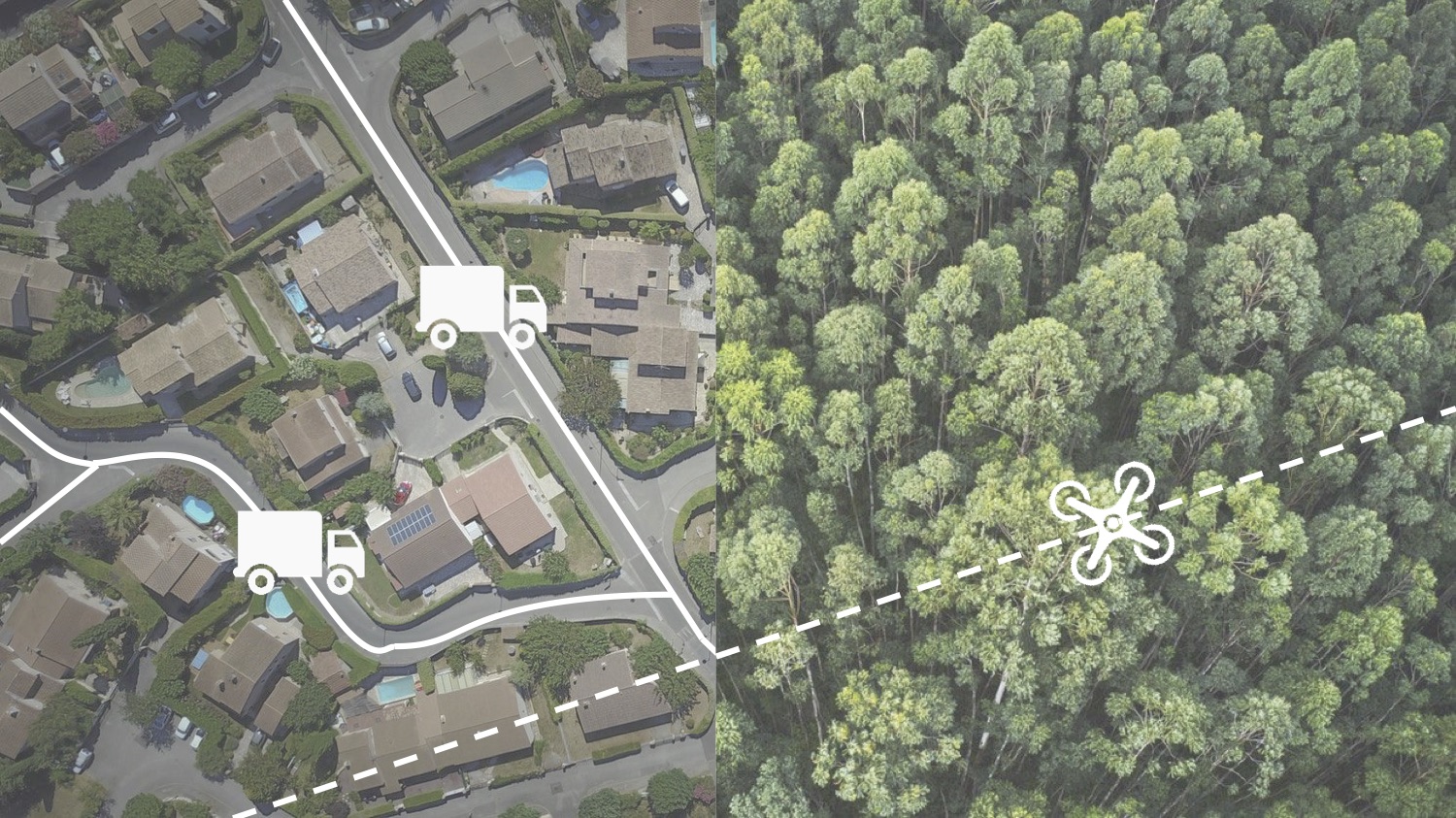Air Care: Health From Above

Sushrut Arora / 2019
Yale School of Public Health
“To live within the multiple, interlocking infrastructures, of modern societies is to know one’s place, in gigantic systems that both enable and constrain us. The automobile/road infrastructure, for example, allows us to move around at great speed, but also defines where it is possible to go; only a few modern people travel far on foot to places where there are no roads.”
— Quote From Infrastructure and Modernity: Force, Time, and Social Organization in the History of Sociotechnical Systems by Paul N. Edwards
Significant experimentation is occurring on the potential commercial application of drones in healthcare and how they can exten the reach of care.
Drones have the potential to deliver life-saving products—organs, blood, medication, medical devices, and surgical supplies—in the shortest time frames relative to any other transport media, making traversing difficult and underdeveloped terrain a non-issue.
This research explores the various implications of these developments with regard to the dynamic between private and public actors, commercial possibilities, and the health status of populations. It is possible to examine multiple facets of drone-enabled healthcare by observing three entities with different methods and organizational statuses: Zipline, The Norman Foster Foundation, and the World Health Organization.
Zipline, a private for profit company, states that their mission is to provide every human on Earth with instant access to vital medical supplies. Their facilities in Rwanda and Ghana are capable of performing 500 flights per day, per location, and with a top speed of 128 kph (80 mph), the drones are able to carry a 1.8 kg (4 lb) payload anywhere within an 80 km (50 mi) service radius.
The Norman Foster Foundation, a private non-profit, has designed a prototypical “drone port” for Rwanda, which would be the first of its kind in the country. In addition to servicing medical needs throughout the region via drone, the facility will also house a health clinic, a post office, and serve as a trading hub.
Finally, the World Health Organization, an intergovernmental organization, is seeking to use drone technology to deliver contraceptives to women around the globe. With 225 million women lacking access to contraceptives, and 47 thousand women dying every year as a result of unsafe abortion practices, the W.H.O. is able to provide medical care via drone for 15 USD per flight.
While these advancements in medical care are promising, it is important to keep a weather eye on that technological horizon. As Chua, Danyluk, Cowen, and Khalili state in Turbulent Circulation: Building a Critical Engagement with Logistics, “Logistical systems increasingly encroach on everyday life under the justification that rapid, efficient circulation is necessary to the welfare of the economy, the state, and its people. Yet, as both a calculative rationality and a practice of spatial ordering, mainstream iterations of logistics work to promote the accumulation of capital and state power in ways that exacerbate existing inequalities and produce new dispositions of life and death.”
Yale School of Public Health
“To live within the multiple, interlocking infrastructures, of modern societies is to know one’s place, in gigantic systems that both enable and constrain us. The automobile/road infrastructure, for example, allows us to move around at great speed, but also defines where it is possible to go; only a few modern people travel far on foot to places where there are no roads.”
— Quote From Infrastructure and Modernity: Force, Time, and Social Organization in the History of Sociotechnical Systems by Paul N. Edwards
Significant experimentation is occurring on the potential commercial application of drones in healthcare and how they can exten the reach of care.
Drones have the potential to deliver life-saving products—organs, blood, medication, medical devices, and surgical supplies—in the shortest time frames relative to any other transport media, making traversing difficult and underdeveloped terrain a non-issue.
This research explores the various implications of these developments with regard to the dynamic between private and public actors, commercial possibilities, and the health status of populations. It is possible to examine multiple facets of drone-enabled healthcare by observing three entities with different methods and organizational statuses: Zipline, The Norman Foster Foundation, and the World Health Organization.
Zipline, a private for profit company, states that their mission is to provide every human on Earth with instant access to vital medical supplies. Their facilities in Rwanda and Ghana are capable of performing 500 flights per day, per location, and with a top speed of 128 kph (80 mph), the drones are able to carry a 1.8 kg (4 lb) payload anywhere within an 80 km (50 mi) service radius.
The Norman Foster Foundation, a private non-profit, has designed a prototypical “drone port” for Rwanda, which would be the first of its kind in the country. In addition to servicing medical needs throughout the region via drone, the facility will also house a health clinic, a post office, and serve as a trading hub.
Finally, the World Health Organization, an intergovernmental organization, is seeking to use drone technology to deliver contraceptives to women around the globe. With 225 million women lacking access to contraceptives, and 47 thousand women dying every year as a result of unsafe abortion practices, the W.H.O. is able to provide medical care via drone for 15 USD per flight.
While these advancements in medical care are promising, it is important to keep a weather eye on that technological horizon. As Chua, Danyluk, Cowen, and Khalili state in Turbulent Circulation: Building a Critical Engagement with Logistics, “Logistical systems increasingly encroach on everyday life under the justification that rapid, efficient circulation is necessary to the welfare of the economy, the state, and its people. Yet, as both a calculative rationality and a practice of spatial ordering, mainstream iterations of logistics work to promote the accumulation of capital and state power in ways that exacerbate existing inequalities and produce new dispositions of life and death.”